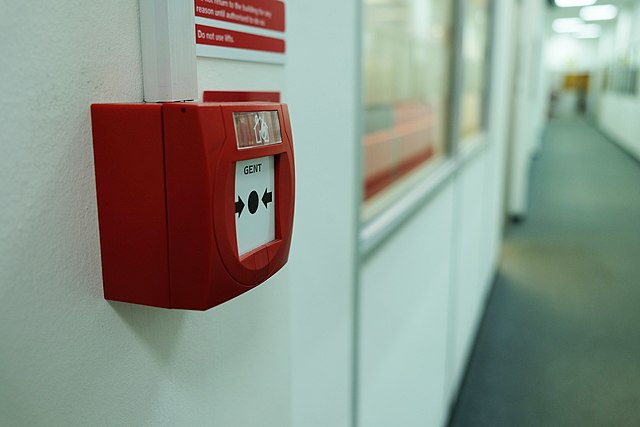A fire alarm system is a building system designed to detect, alert occupants, and alert emergency forces of the presence of fire, smoke, carbon monoxide, or other fire-related emergencies. Fire alarm systems are required in most commercial buildings. They may include smoke detectors, heat detectors, and manual fire alarm activation devices. All components of a fire alarm system are connected to a fire alarm control panel. Fire alarm control panels are usually found in an electrical or panel room. Fire alarm systems generally use visual and audio signalization to warn the occupants of the building. Some fire alarm systems may also disable elevators, which are unsafe to use during a fire under most circumstances.
A fire alarm horn strobe, pull station, and remote annunciator connected together in a fire alarm system
A fire alarm notification appliance as widely used under North American standards
A fire alarm control panel
Fire alarm speaker and pull station
Manual fire alarm activation
Manual fire alarm activation is the process of triggering a fire alarm through a call point, pull station, or other device. This usually causes the alarm to sound the evacuation signal for the relevant building or zone. Manual fire alarm activation requires human intervention, as distinct from automatic fire alarm activation such as that provided through the use of heat detectors and smoke detectors. It is, however, possible for call points/pull stations to be used in conjunction with automatic detection as part of the overall fire detection and alarm system. Systems in completed buildings tend to be wired in and include a control panel. Wireless activators are common during construction.
Simplex single action "T-bar" pull station
A manual call point in the European Union (EU) with standard EN 54-11
An activated manual call point in Japan. Telephone jacks are visible beneath the open cover.
German manual call point with paint from NOTIFIER (Honeywell)








